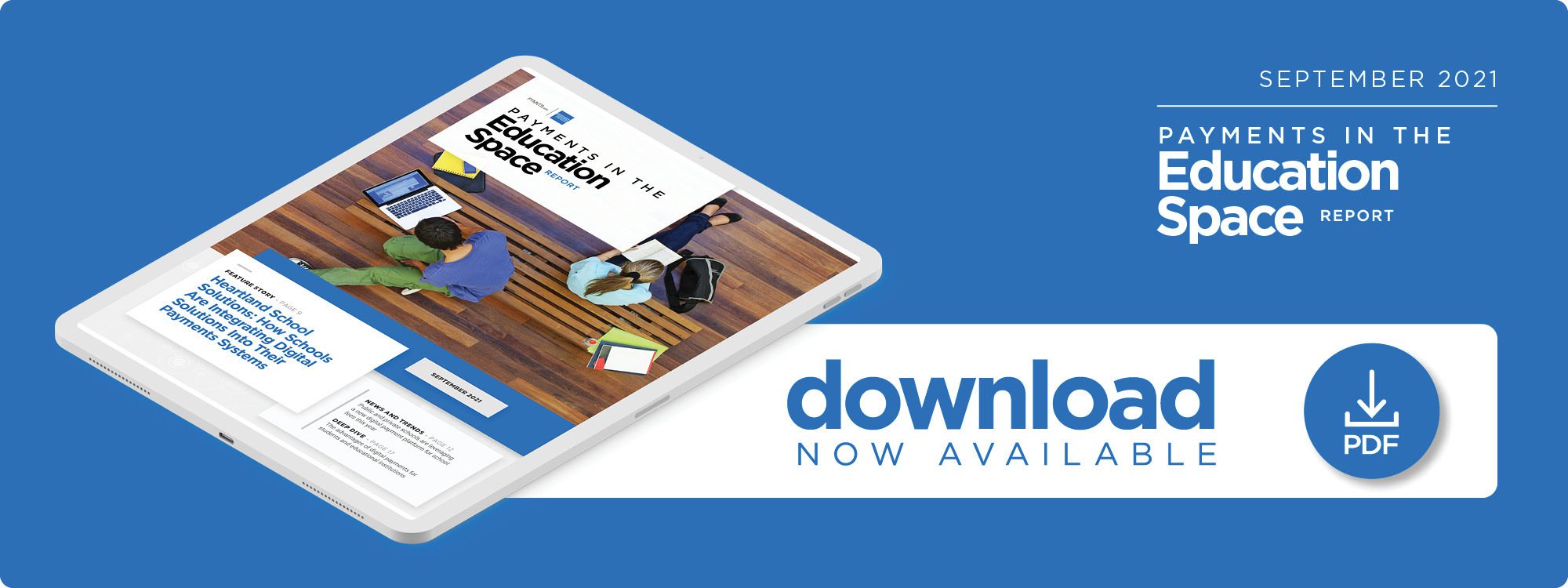Deep Dive: How Educational Institutions Can Benefit From Digital Payment Systems

The events of the past 18 months have pushed consumers to quickly incorporate new payment technologies into their daily lives.
Pandemic-related health concerns and public safety initiatives have led to a greater demand for touchless payment options and services, with one study showing that 35% of consumers are more likely to use contactless payments for in-store purchases now than they were prior to the pandemic.
Modern educational systems have not ignored this technological evolution. Many parts of the world saw school closures that lasted almost a year or longer, leading to the rapid adoption of remote learning platforms. Antiquated collection methods for tuition and fees were subsequently eliminated, with school administrators turning their attention toward new, frictionless, automated payment services. Digital technology now is making the education payments process more simple, speedy and secure for all parties involved.
The following Deep Dive examines the benefits of harnessing digital payment services for educational systems. It also explains the challenges the education payments space may experience moving forward as well as how these issues can be resolved.
Digital Payment Methods for a New Education Landscape
Computers and technology are nothing new to the average student, but most students prior to 2020 received the bulk of their education on campuses. The United Nations Educational, Scientific and Cultural Organization (UNESCO) reported that the unprecedented switch to remote learning affected 90% of enrolled learners worldwide. The expansion of the learning environment beyond campuses and into the virtual realm is driving demand for faster, more efficient ways to collect and disburse payments for educational services ranging from distance learning to online test preparation to student loan repayment.
Research from OmniFund shows that digital payments technology can reduce errors and simplify transactions for students attending school both online and in person. Many students depend on scholarships and other financial aid to pay for tuition, housing, healthcare, supplies and certifications, for example. It can take up to three weeks to deposit these funds using legacy methods, but disbursement via mobile or digital solutions speeds and eases the process while also assuring lenders that funds are allocated appropriately.
Students and guardians who are concerned about the rising costs of education also may benefit from alternative payment methods such as installment plans, credit acceptance and remote deposits, which can reduce stress and allow learners to stay focused on their studies. A digitized back-office management system can save time and resources for administrators, moreover, while also offering better control and visibility over payments and more secure payments ecosystems.
The education industry must perpetually innovate so that it can accommodate students’ individual financial preferences. PYMNTS reported that only 5% of millennials use paper checks to pay for education-related expenses, for example, and mobile solutions can be a better alternative for more digital-focused younger generations.
The Future of the Education Payments Space
Eliminating cash and paper transactions can result in the better management of fees, simplification of fund disbursement processes and reduction of errors associated with manual collection processes. It also unquestionably benefits students. Nearly two-thirds of consumers use some form of contactless payments, yet many schools do not accept a number of these methods. This can be particularly detrimental for students who are studying abroad, especially in the U.S. and the U.K.
Most families also pay for college using at least some of their personal income. More than 80% of bursars at four-year universities said flexible payment plans tailored to individual students can be attractive alternatives to traditional payments. Self-service, interest-free payment options make education more affordable and may lead to increased enrollment among members of underserved, low-income communities.
Real-time visibility and control over payments are two necessary capabilities for school financial leaders who want to successfully offer a variety of digital payments. PYMNTS research found that 72% of school financial leaders believe their payments systems are only slightly or somewhat effective. Leveraging digital payment tools can lead to greater satisfaction among both providers and learners in the education space. The most effective institutions will enable students and families to make online payments from anywhere in the world, at any time, using their preferred payment methods.

